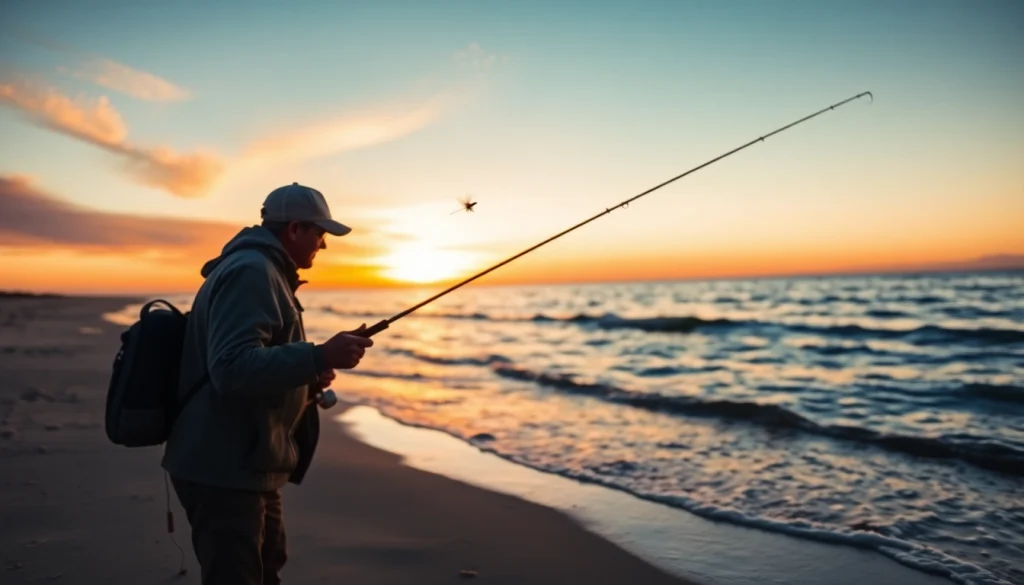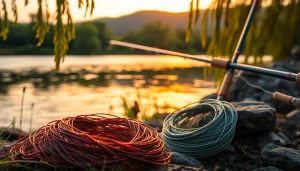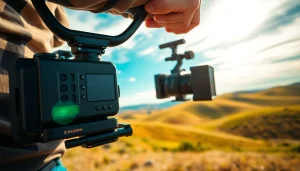Mastering Saltwater Fly Fishing: Techniques and Tips for Every Angler

Introduction to Saltwater Fly Fishing
Saltwater fly fishing is an exhilarating and challenging pursuit that combines skill, patience, and an intimate understanding of marine ecosystems. This sport invites anglers to engage with powerful fish species in dynamic waters, transforming a simple act of fishing into a deeply satisfying and rewarding experience. For those new to this art, diving into Saltwater fly fishing can appear daunting, but with the right knowledge and tools, anyone can immerse themselves successfully in this fascinating world.
What is Saltwater Fly Fishing?
Saltwater fly fishing involves casting artificial flies, crafted from feathers, fibers, and other materials, to attract various saltwater fish species. Unlike traditional bait fishing that employs natural bait, this method capitalizes on the unique presentation and action of the fly to entice fish. Typical locations for saltwater fly fishing include coasts, bays, estuaries, and open ocean settings, targeting species such as tarpon, bonefish, striped bass, and permit.
The essence of saltwater fly fishing lies not just in the catch itself, but in the experience—engaging with nature, observing aquatic behavior, and mastering the intricacies of casting. Anglers must develop techniques to cope with the diverse conditions presented by the marine environment, which can quickly change and challenge even the most seasoned fly fishers.
Essential Gear for Saltwater Fly Fishing
Successful saltwater fly fishing requires specific gear designed to withstand the harsh conditions typical of coastal and oceanic environments. Here’s a breakdown of the essential components:
- Fly Rod: Choose a rod designed for saltwater. Typically, these rods range from 8 to 12 weight, depending on the species targeted and the environment. The rods should be durable and capable of casting heavier lines and larger flies.
- Fly Reel: A high-quality saltwater reel is essential for managing strong fish and rough conditions. Look for reels with strong drag systems and corrosion-resistant materials to withstand seawater.
- Fly Line: Saltwater fly lines are specifically designed for casting in windy environments and are available in floating, sinking, and intermediate types, each suited to different fishing scenarios.
- Leaders and Tippets: Use fluorocarbon leaders due to their invisibility underwater and durability against abrasion. Leader strengths typically range from 15 to 30 pounds, depending on the species.
- Flies: The selection of flies is pivotal and should vary according to targeted species and conditions. Common patterns include clouser minnows, deceivers, and crab patterns, mimicking local bait.
- Clothing: Protective clothing is essential as it provides protection from the sun and weather. Breathable, quick-drying fabrics, along with polarized sunglasses, are recommended to reduce glare and enhance visibility in the water.
Investing in quality gear tailored to saltwater conditions can greatly improve the fishing experience and increase your chances of success on the water.
Understanding Saltwater Ecosystems
A fundamental aspect of saltwater fly fishing is understanding the complex ecosystems where these fish reside. Saltwater environments are rich and diverse, encompassing various habitats such as estuaries, mangroves, coral reefs, and sandy flats. Each area presents unique opportunities and challenges.
Estuaries serve as nurseries for many species, offering abundant food and protection. Here, anglers can find juvenile fish, making it an excellent spot for beginners. Mangroves provide habitat and shelter for numerous species, but accessing these dense areas might require specific techniques.
Coral reefs, on the other hand, attract larger game fish like barracuda and snapper, while sandy flats are famous for species like bonefish, which rely on stealth and quick movements to evade predators.
Each ecosystem is affected by tidal movements, salinity levels, food sources, and weather patterns, making it essential for anglers to adapt their strategies accordingly.
Techniques for Successful Saltwater Fly Fishing
Basic Casting Techniques for Saltwater Fly Fishing
Effective casting is the cornerstone of successful saltwater fly fishing. Techniques may differ slightly from freshwater casting due to wind, distance, and the heavier weight of saltwater gear. Here are key aspects to focus on:
- Double Haul: The double haul technique boosts line speed and distance when casting. By pulling on the line with one hand while hauling back with the other during the cast, the angler can achieve a more powerful and accurate cast.
- Timing and Rhythm: Proper timing in the casting stroke is crucial. Ensure smooth transitions between false casts to avoid tangles and reduce casting fatigue, especially in windy conditions.
- Presenting the Fly: Pay attention to the way the fly lands on the water. A gentle presentation mimics natural bait and increases the chances of fish striking.
Reading Tides and Conditions
Understanding tidal movements is essential for saltwater fly fishing success. Tides not only affect the location of fish but also their feeding behavior. Here are some tips on how to read the tides and conditions effectively:
- High Tides: Fish tend to move closer to shore or into estuaries at high tide. This presents an excellent opportunity to target species that feed in shallow waters.
- Low Tides: During low tides, fish often retreat farther from the shore or into deeper waters. Observing where they go can inform your casting strategy and areas to target.
- Weather Conditions: Wind can affect how you cast and can impact fish activity. Overcast days often increase fish movement, while bright sunny days may require stealthy approaches.
Effective Fly Patterns for Different Species
Choosing the right fly pattern can significantly impact your success rate. Here are some popular patterns tailored for specific saltwater species:
- Bonefish: Simple crab patterns and shrimp imitations work wonders due to their natural foraging behavior.
- Tarpon: Large streamers and baitfish imitations are effective. Colorful patterns can attract their attention in murky waters.
- Permit: Permit are notoriously picky, making it essential to use realistic crab imitations that mimic their natural prey.
- Striped Bass: Large baitfish patterns that mimic sand eels are effective during the fall migration, especially in coastal areas.
Choosing the Right Location for Saltwater Fly Fishing
Top Saltwater Fly Fishing Destinations
Whether you’re seeking sandy beaches, rocky coastlines, or serene estuaries, countless exceptional destinations cater to saltwater fly fishing enthusiasts. Some popular options include:
- The Florida Keys: Famous for its diverse species and stunning vistas, the Keys offer excellent opportunities for targeting bonefish and tarpon.
- Mexico’s Yucatan Peninsula: Renowned for its flats fishing, this area provides ample chances to catch bonefish and permit in pristine settings.
- The Bahamas: Prized for its crystal-clear waters and abundant marine life, the islands are ideal for anglers seeking variety and beauty.
Identifying Productive Fishing Spots
Finding productive fishing spots requires research and local knowledge. Here are some tips:
- Consult Local Experts: Engaging with local guides or fishing communities can provide insights into the best spots and times to fish.
- Utilize Technology: GPS tools and fishing apps can help track tides, water temperatures, and other variables influencing fishing conditions.
- Observe Wildlife: Birds and other wildlife behavior can signal the presence of fish, guiding your choice of where to cast.
Considerations for Seasonal Variations
Seasonal changes can have a profound impact on saltwater fishing. Understanding these shifts can maximize your success:
- Spring: Fish are often more active as they spawn, making this a prime time for targeting various species.
- Summer: Warmer waters lead to increased fish activity, though anglers should be mindful of heat and hydration.
- Fall: Migration patterns often lead to increased feeding activity, especially with larger fish migrating in search of food.
- Winter: Fishing can be challenging in colder months, but many species remain active. Anglers should focus on deeper waters where fish seek warmth.
Common Challenges in Saltwater Fly Fishing
Dealing with Weather and Tides
Weather and tidal conditions can pose significant challenges for saltwater fly anglers. Here are some strategies for coping with these unpredictable factors:
- Plan Ahead: Always check weather reports and tidal charts before heading out. Understanding expected conditions can inform your strategy.
- Adjust Tactics: Be flexible in your fishing approach; if fish are not biting in one location, be prepared to move based on tidal and weather conditions.
Overcoming Technical Obstacles
Technical challenges can arise from casting difficulties or equipment failures. Here’s how to mitigate these issues:
- Practice Regularly: Regular casting practice can build muscle memory and improve accuracy, making you a more effective angler.
- Maintain Equipment: Regularly check and maintain your gear to prevent failures on the water, including inspecting lines and reels for wear.
Strategies for Catching Spooky Fish
Many saltwater species, such as bonefish and permit, can be wary and easily spooked. To improve your chances:
- Stealth: Approach fishing spots quietly and be mindful of your movements and shadows to avoid alerting fish.
- Longer Casts: Use longer casts to minimize disturbance and present the fly naturally in the strike zone, as close proximity can scare cautious fish away.
Advanced Tips for Experienced Anglers
Refining Techniques for Diverse Conditions
For experienced fly fishers, refining techniques to adapt to various conditions marks a significant step in mastering saltwater fly fishing:
- Experiment with Fly Color and Size: Fish behavior can shift based on water clarity and time of day; varying your fly’s color and size can lead to better results.
- Understand Fish Behavior: Observe fish patterns—are they feeding on the surface or deeper? Adjust your strategy to match their behavior.
Innovative Gear and Technology Trends
Staying informed about advancements in fly fishing gear and technology can enhance your fishing experience:
- Sensitive Rod and Reel Combinations: New materials and designs make rods and reels lighter and more responsive, improving casting distance and feel.
- Apps for Smart Fishing: Leverage fishing apps that provide real-time data on tides, weather, and fish activity to optimize your fishing trips.
Building a Community in Saltwater Fly Fishing
Engaging with fellow anglers can enrich your saltwater fly fishing experience:
- Join Local Fly Fishing Clubs: Being part of a community offers opportunities for learning, shared experiences, and organized outings.
- Participate in Workshops and Clinics: Many communities offer events where you can learn new techniques and share knowledge with experienced anglers.
Saltwater fly fishing offers a captivating blend of adventure, skill, and camaraderie. By understanding the ecosystem, mastering techniques, and choosing the right locations, anglers can enjoy a fulfilling and successful time on the water. Whether you are a novice or seasoned pro, the journey into the world of saltwater fly fishing is one filled with endless excitement and discovery.







